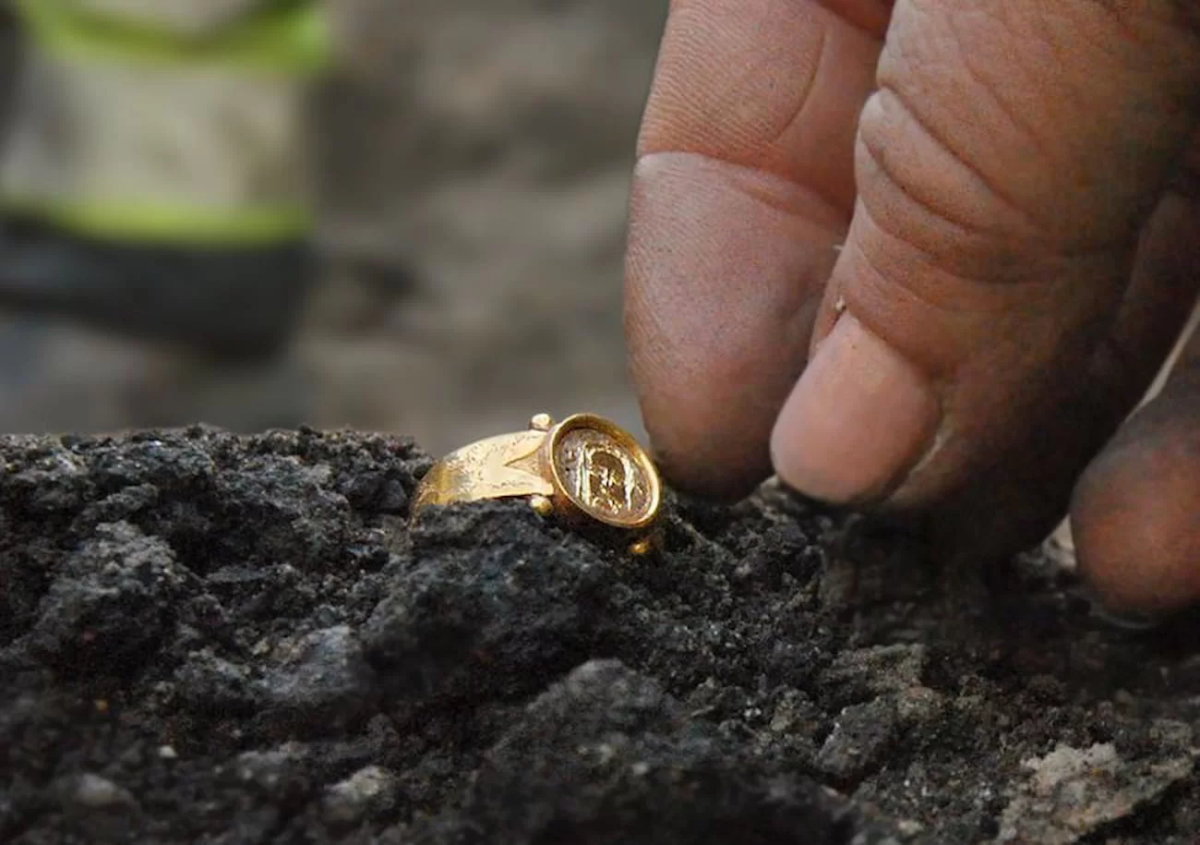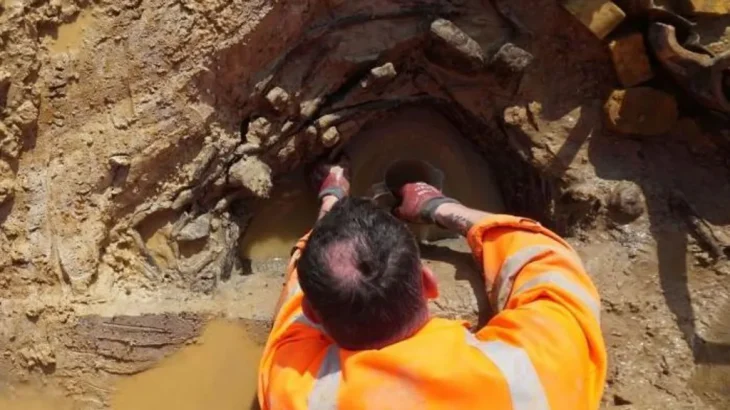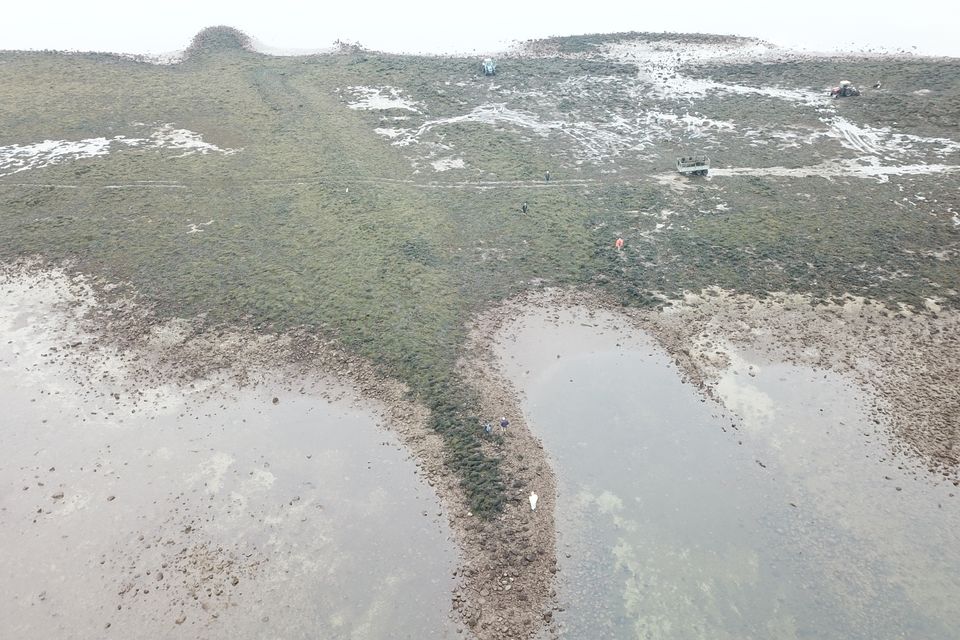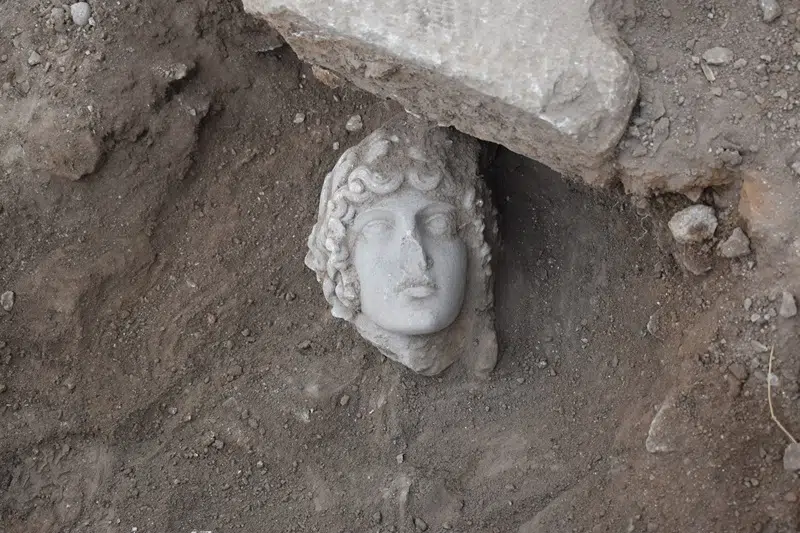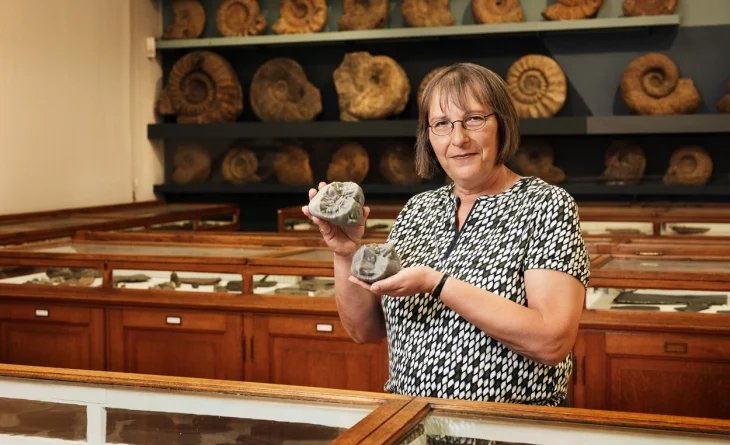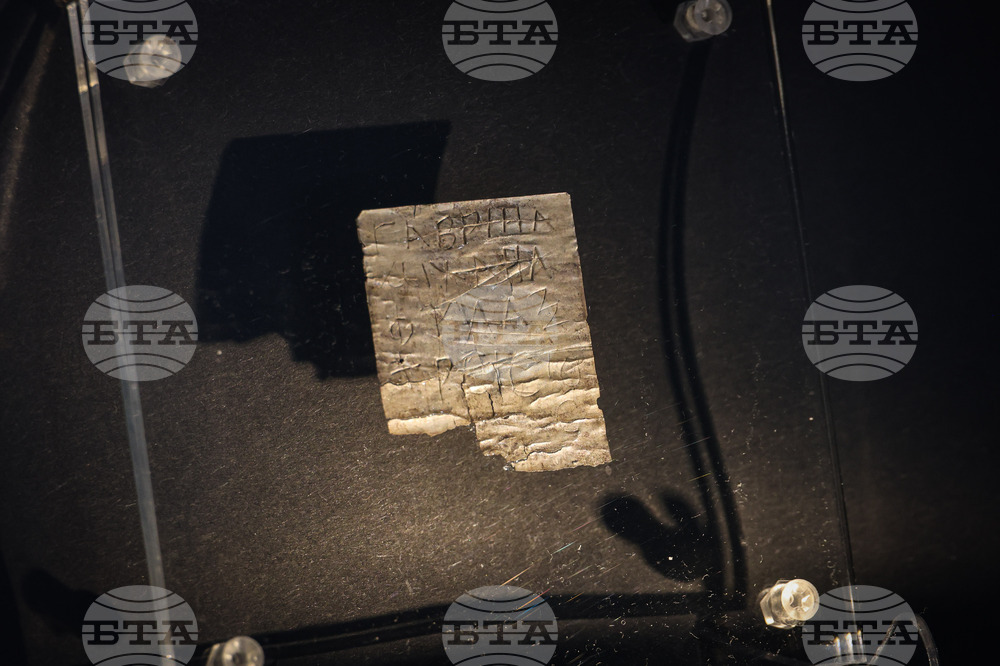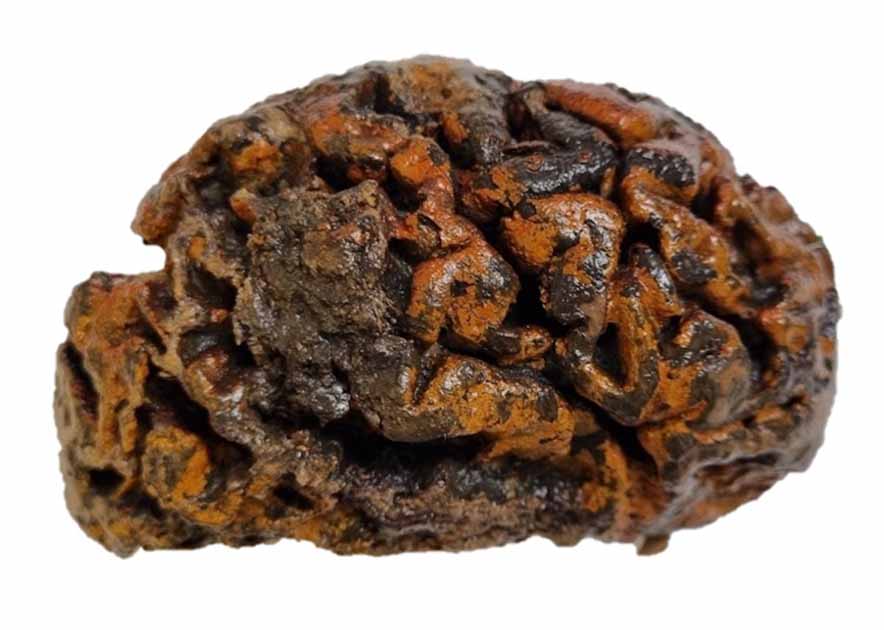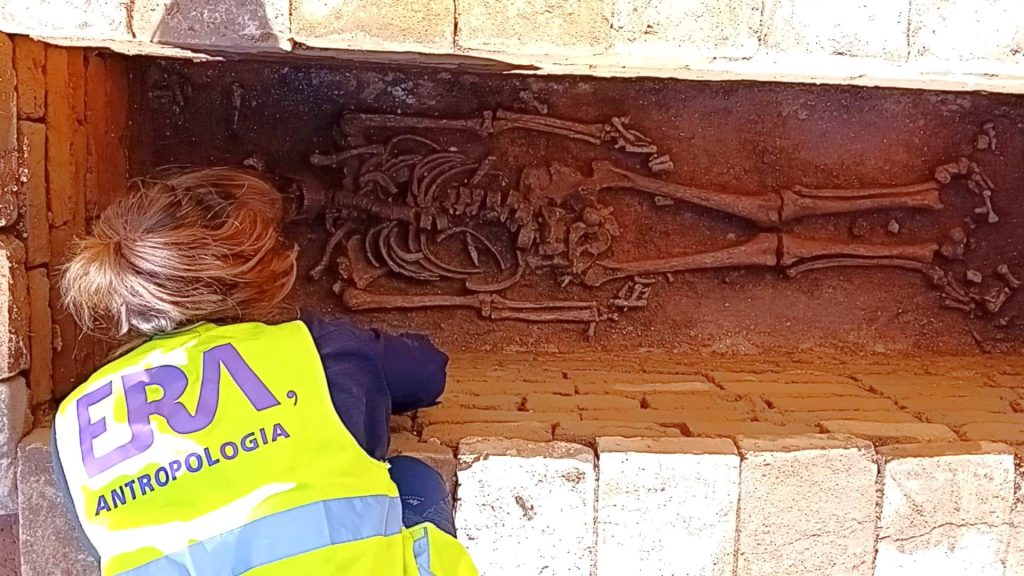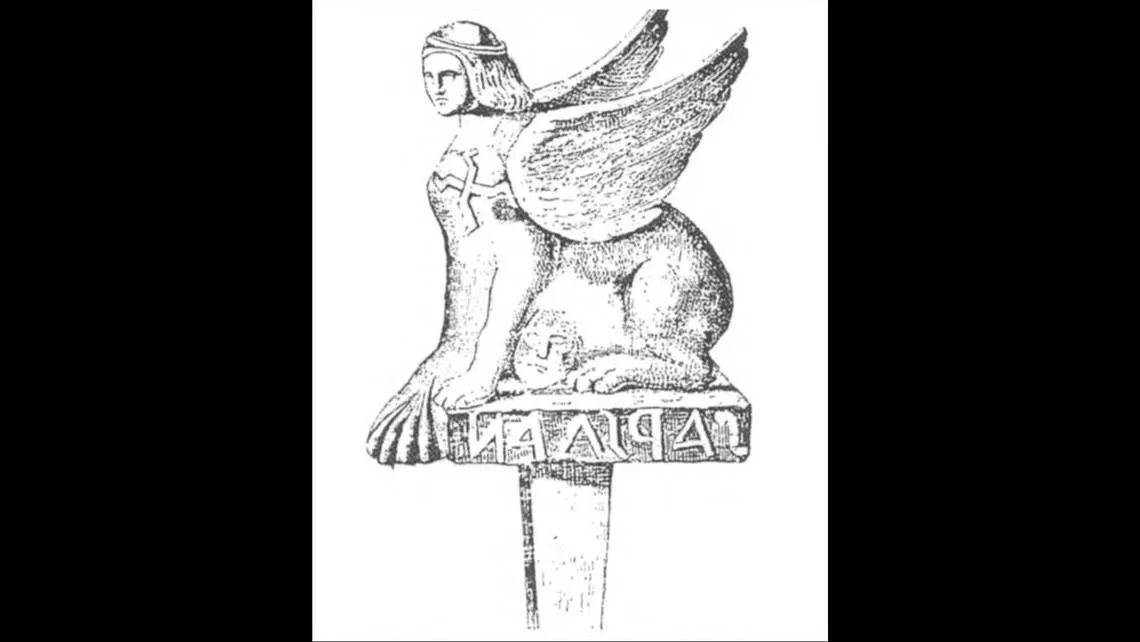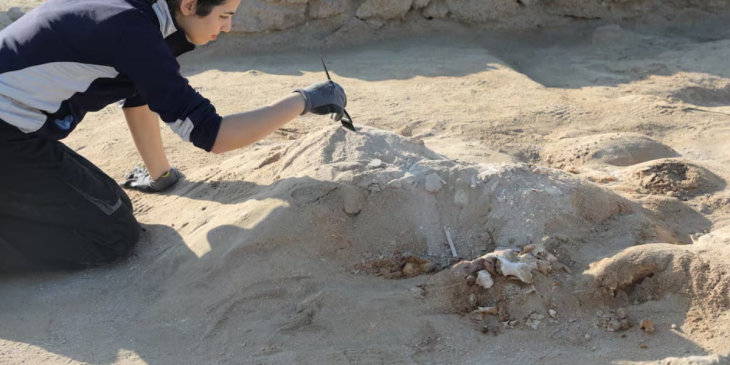In the Swedish medieval city of Kalmar, archaeologists from the State Historical Museums unearthed the remains of over 30,000 objects during a two-year project. A gold ring and a crystal amulet with carved figures are two unique finds among the nearly 30,000 objects.
Archaeologists have excavated parts of around 50 medieval plots, a dozen streets, and sections of the old city wall. This project, offers a glimpse into everyday life spanning approximately 400 years, from 1250 to 1650.
Project director of Arkeologerna, lead archaeologist Magnus Stibéus said, “We’ve been able to lift the lid on the city’s medieval past and have had the opportunity to study how people lived, what they ate and drank, and how this changed over time. Archaeology becomes like a peephole into medieval history, giving us more insight into how life was hundreds of years ago,”.
Remarkable discoveries include a rare glass alsengem and a gold ring that were found in refuse deposits.
The gold ring, adorned with a Christ motif, dates back to the 15th century and is believed to have been worn by a woman due to its petite size. they believe it was lost, given its near-perfect condition. Similar rings have been found in other regions, including Northern Finland, Östergötland, and Uppland.
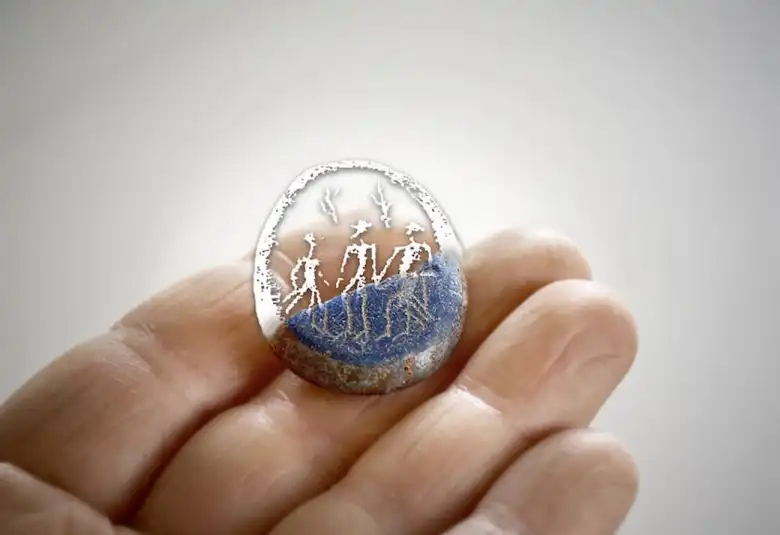
A second standout discovery: an alsengem, also known as a pilgrim’s amulet, with three carved figures. Alsengemmer are small crystal stones found in both religious and secular contexts. Dating from the 13th to 14th century, it features three intricately carved figures. The stones are named after the Danish island where they were first discovered. The small glass stone is broken, so it was likely thrown away around 400 years ago, officials said.
Among the finds were numerous cannonballs, musket balls, pistol bullets, swords, and other artifacts from the 1611 Kalmar War, in which the Danes attacked the city. An unusual rune stone was discovered among the ruins.
The excavations have provided a comprehensive view of medieval Kalmar, with remnants of buildings, cellars, streets, latrines, and other everyday items. Magnus Stibéus said: “It is very unusual for such large contiguous areas to be investigated in the middle of a city, and the result exceeds all expectations.”
The ability to simultaneously investigate such extensive parts of the medieval city makes the project unique.
Cover Photo: Arkeologerna

